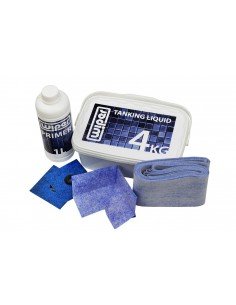- Matt R.
- Shower drains
- 10149 views

One of the current trends in bathroom design is the use of wood as a main theme. Facing the choice of materials for the bathroom decor, we wonder if wood is definitely a good material for the humid conditions prevailing in it. We wonder if the wooden floor or countertop will last long or quickly begin to dull, deform or even rot. Such concerns are understandable, but all the disadvantages of timber usage in wet conditions can be avoided. It is extremely important to take them into account when planning a renovation or construction.
WOOD HAS BEEN PRESENT IN BATHROOMS FOR MANY YEARS
Timber in our homes, also in bathrooms, has been present for centuries. Initially, it was a basic building material. Later, more modern solutions began to be used, but the raw decor with wooden elements has always been present. The best answer for the question “Is wood a good building material for wet conditions?” will be a few dozen-year-old wooden cottages and boats which until today are often in an amazingly good condition. Wood is a very grateful material for renovation. You can easily cut, grind, machine and paint them easily. After years of use, we can decide to change the color of wooden elements completely transforming the appearance of our bathroom. During the renovation, we can also change the way of impregnation and for example, instead of varnish, apply oil, thanks to which we will bring out the natural beauty and texture of the wood. Another significant advantage of timber is the always warm to the touch feeling as opposed to cold ceramic. Timber has also much better anti-slip properties than ordinary tiles.
IMPREGNATION IS KEY
With currently easily available many different wood species and advanced wood impregnation technology, we are able to create very durable surfaces suitable for use in bathrooms. Until recently, varnishes were most often chosen as wood preservatives. But not everyone will be satisfied with a shiny and not very durable coating. That's why for years on the market there are more and more solutions based on oils and waxes available. They will give you not only a beautiful natural finish but also are easy to use and guarantee very long-lasting protection. It is worth noting that currently available products are chemically much more advanced than they used to be and can be adapted to a particular type of wood. During installation, remember to impregnate not only the wood itself, but also to properly isolate it from the ground. Improper insulation under a wooden floor can be a much bigger problem than the presence of water on its well impregnated surface. In addition, as usual in the case of bathrooms, good ventilation will be of great importance.
WOOD CHOICE IS ALSO IMPORTANT
In addition to proper impregnation and installation, it is very important to choose the right type of wood. The use of soft, resinous wood on the floor next to the shower is probably not the best idea. With the current access to wood species from around the world, we can choose those that will naturally cope well in wet conditions and at the same time match our bathroom appearance and taste. For example teak, oak or bamboo will be a very good choice. Thanks to their hardness and tight grain combined with appropriate impregnation, will give us a very durable floor or counter top suitable for a bathroom. If you want to buy raw wood and impregnate it yourself, remember that it has to be properly seasoned and dried. The use of cheaper fresh wood is likely to be deplorable.
CHEAT OR STAY WITH DETAILS
If for some reason we are not convinced to solid wood in a wet room, we can use a series of half-measures or substitutes to still get this beautiful raw wood look. Often, a small wooden detail like a cabinet or shelf is enough to bring some warmth and nature into a cold industrial room. Currently, wooden walk-in shower mats are often used thanks to which we can achieve home SPA-like effect. As a last resort, we can use the recently popular tiles imitating the texture of wood. Well-chosen and properly laid tiles can deceive the eye even up close.









